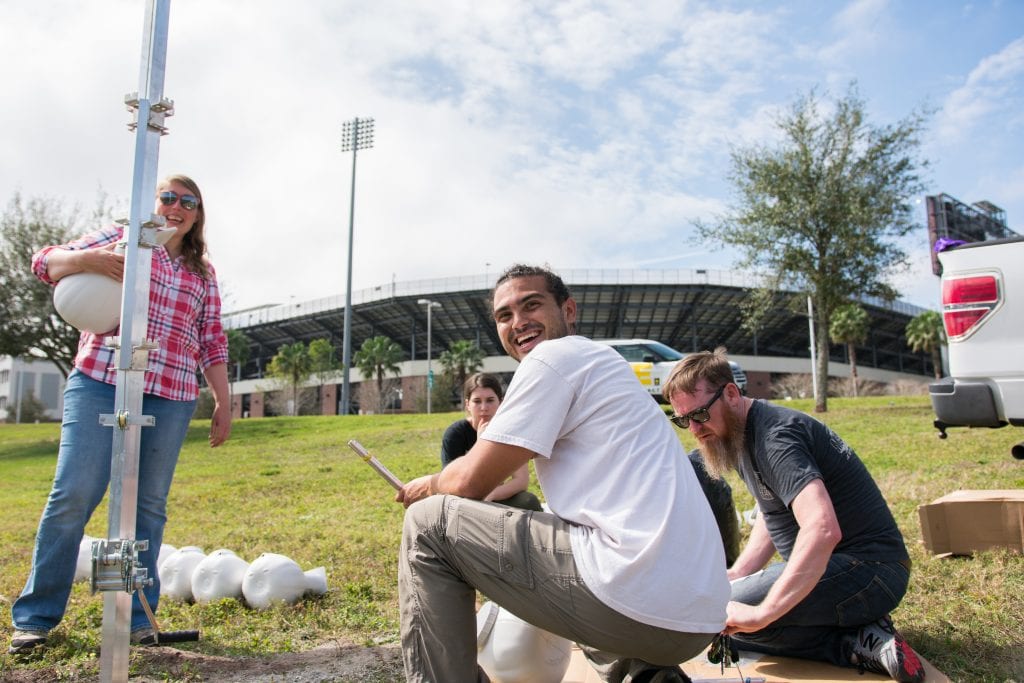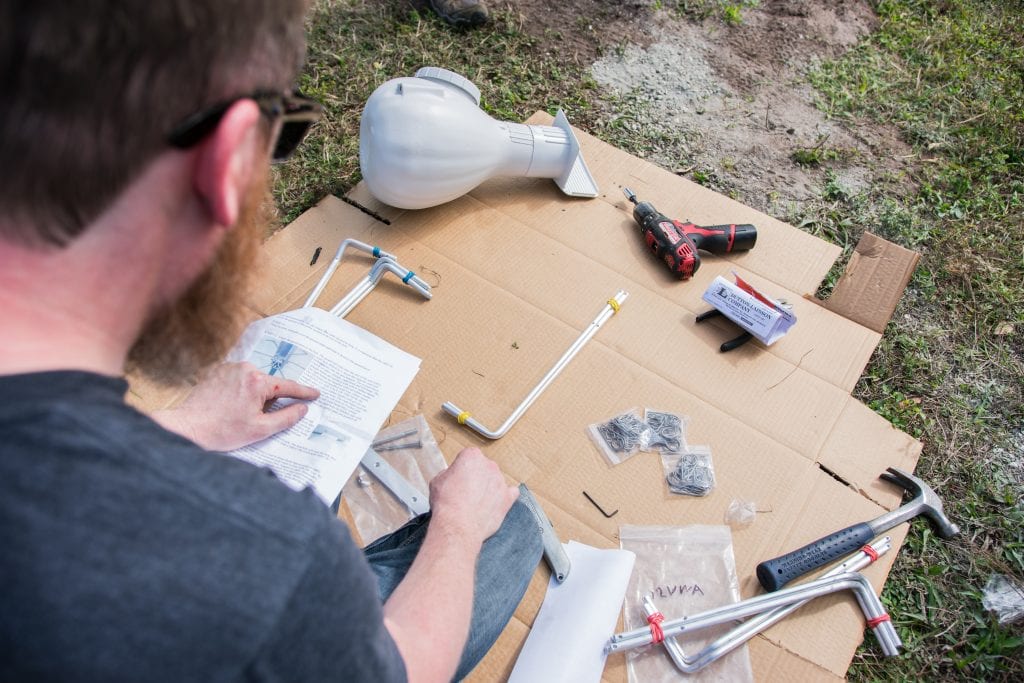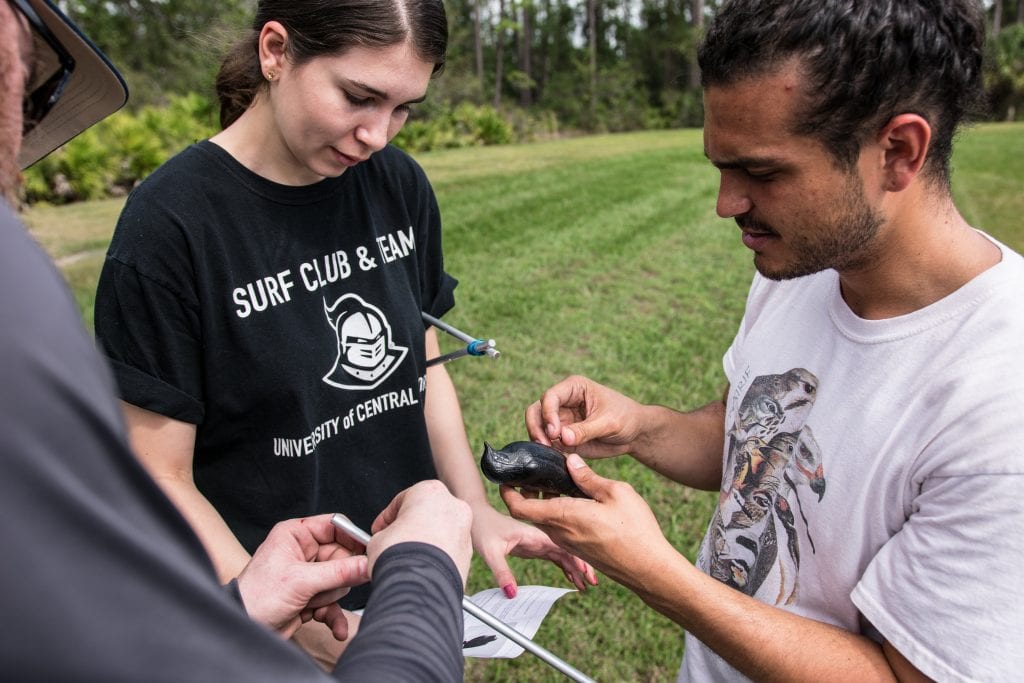Students Learn Research Fundamentals Through Bird House Project

Students assemble a bird house pole.
A new study exploring nesting preferences of North America’s largest swallow is giving students hands-on experience in scientific methods.
The Purple Martin Project, led by Department of Biology Research Scientist Anna Forsman, Ph.D., aims to attract the birds using strategically placed nests around UCF’s main campus.
Students from Forsman’s biology courses and the Wild Symbioses Lab worked diligently to place 12 poles around campus to host the birds. Each 14-foot pole holds 6-18 plastic gourds that function as the actual nesting site, for a total of 144 gourds under study.
“These are very social creatures,” said Forsman, a member of UCF’s Genomics and Bioinformatics Cluster. “They are colonial nesters, so it will be interesting to see if they prefer poles that have a higher density of gourds or lower. We can hypothesize that the more gourds on the pole, the more nesting we’ll see.”
There are 12 poles paired at six different sites across campus. Some of the gourds are stuffed with pine straw, while others are empty. This will test the Martin’s preference for pre-existing nesting material, along with the density of nests.
Since the Purple Martin is a migratory bird, sighting will begin in early spring and last through the end of summer. Forsman has deployed several incentives to attract the birds.
“We’re getting some speakers that broadcast the chattering of the Martins and some bird decoys to put up on the poles,” Forsman said. “It signals to them that it’s a productive area for them to nest. You can think of it like the suburbs. The birds are attracted to where they feel the safest, most developed nesting sites are.”
The Purple Martin is an ideal species to study for young, aspiring biologists because it is sensitive to environmental conditions. The students helping Forsman will learn concepts like ecology, migration patterns and microbiomes.
Because these birds are also insectivores, Forsman is optimistic the arrival of the Purple Martins on campus will cut down on flying insects.
“I am so excited my students and I are able to study such a multifaceted species,” Forsman says. “Not to mention, less mosquitoes on campus.”












